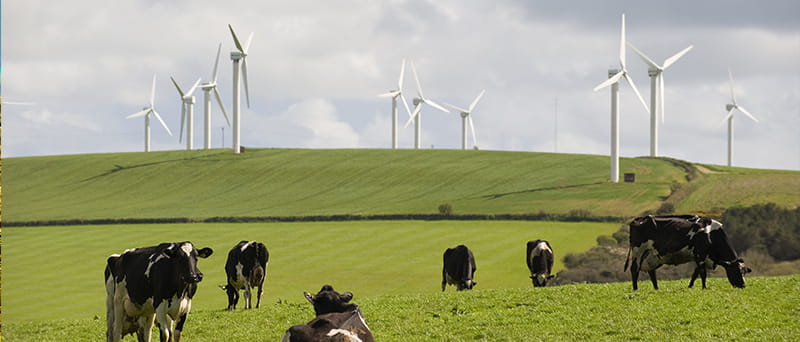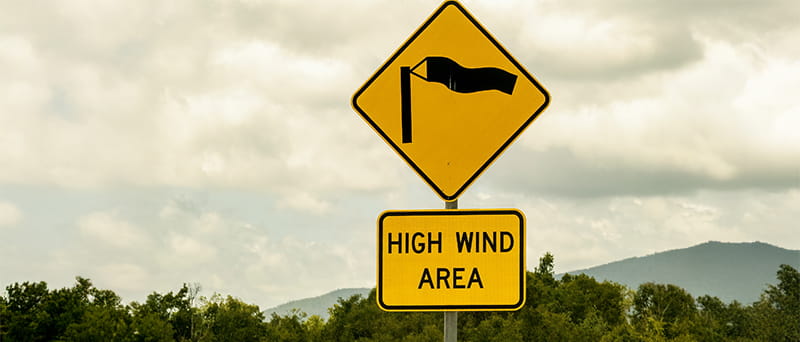Read the latest thoughts and analysis on breakthrough solutions driving impact for a sustainable future
The UK has a natural superpower: wind

The UK has some of the windiest regions in Europe, and it’s making good use of this natural asset in its transition to a green economy.
Anyone who has taken a walk along a British beach on a blustery day will know that this nation of islands is not short on wind. No surprise, then, that wind power, particularly offshore wind, has become one of the UK’s most important assets.
In 2024, nearly a third of the UK’s electricity was generated by wind power, and for ten days in December, that figure leapt to more than 50%. The current government is keen to continue this trend, putting wind at the heart of the UK’s drive to net zero and a more stable, renewable energy sector. Earlier this year, a policy to streamline the creation of thirteen offshore wind sites was announced, opening up to £30 billion (around USD $40.5 billion) of investment opportunities.
Wind power is set to change not just Britain's energy landscape, but its economic future.
International investment driving domestic development
The UK has already made huge strides in wind energy. It is currently the world’s second-largest offshore wind market and represents more than 40% of Europe’s offshore wind capacity.
The UK’s successes in the sector, and its ongoing potential, have not gone unnoticed. In 2023, the UK attracted billions in foreign direct investment (FDI) into offshore wind, with RWE and the UAE’s Masdar jointly putting £11 billion into what will be the world’s largest offshore wind farm, Dogger Bank South. Danish company Ørsted is another big player, having invested £15 billion over ten years.

The benefit of this investment to the UK goes beyond boosting renewable energy sources: they give a new lease on life to coastal towns and ex-industrial hubs. The offshore wind sector already supports over 32,000 jobs, a number that could reach 100,000 by 2030. Wind projects in are providing jobs, infrastructure and adjacent investment for workers who have suffered in the decline of the UK’s manufacturing industry. Vitally, they offer a new opportunity for older workers left unemployed by the shrinking of the fossil fuel industry, who can retrain to enter the green economy.
As well as bolstering local communities and economies, wind power can also offer stability in times of geopolitical upheaval.
A secure energy future
The UK relies heavily on gas as an energy source, but the war in Ukraine and the resulting spike in gas prices showed how sensitive this dependency is to external factors. On and offshore wind provides a chance to be more self-sufficient and increase energy security in a volatile global context. Although storage capability is a limiting factor , and demanding infrastructure targets would need to be met, the UK could, in theory, meet all its energy needs with wind by 2030. Greater reliance on wind offers an important ballast against the fluctuating prices of gas and other energy imports.
Wind energy is more economically viable than oil and gas. A 2022 report from the International Renewable Energy Agency (IRENA) found that offshore wind is now cheaper than new fossil-fuel generation and competitive with existing gas plants. Much of the cost of wind power comes in capital investment – building the infrastructure. However, maintenance and running costs are low compared to fossil fuels, and with time, technological improvements are likely to make energy generation from wind even cheaper – with one report from environment think tank RMI predicting costs of wind energy to halve by 2030.
We are seeing this in action. An International Renewable Energy Agency (IEA) report projected onshore wind to have, on average, the lowest levelized cost of energy (LCOE) among new generation technologies by 2025, competitive with or cheaper than new gas-fired power plants in several regions. LCOE is a measure of the average cost of energy generation over the lifetime of a power plant. 2022 IRENA reporting backs up the IRE projections, finding that the global-weighted average LCOE of offshore wind dropped 59% between 2010 and 2022, while LCOE for onshore wind energy has gone from being higher than the cheapest fossil fuel to 52% lower.

Reaching net zero
If the economic and strategic imperatives aren’t enough, wind power can help the UK hold itself accountable to its net-zero commitments. The UK has legally committed to achieving net-zero emissions by 2050 and wind is likely to play a big part in reaching these targets. The government aims for 50 GW of offshore wind capacity by 2030. Along with solar and hydropower, the UK can use wind to reach its goal of 70% of energy from renewables by 2030.
This transition is already underway: UK energy generation from fossil fuels dropped to 31.5% in 2024. Meanwhile, on and offshore wind provided 29.5%. Considering this trend, alongside predicted lower costs and an opening up to investment, the idea of meeting a significant share of UK energy needs with wind doesn’t seem so far-fetched.
By building this capacity now, the UK can make more realistic its goals of a decarbonized energy industry and mark itself out as a leader in the green transition.
Some have estimated that the UK is the windiest nation in Europe. While this might make a trip to the seaside a fight against the elements, those stormy seas have gifted the UK the opportunity to be a leader in the race to net zero, an energy-secure nation, and a hotspot for green investments.


